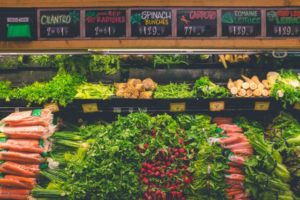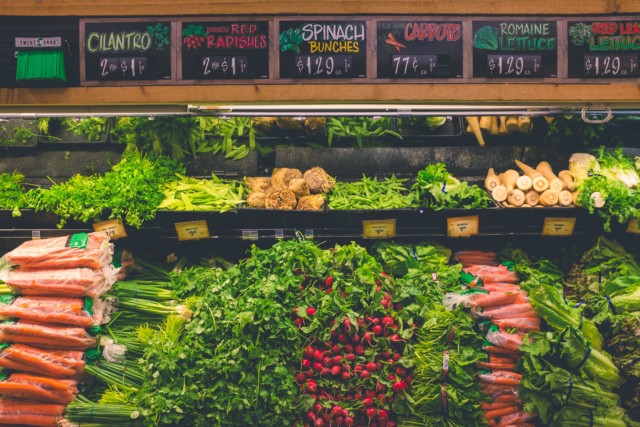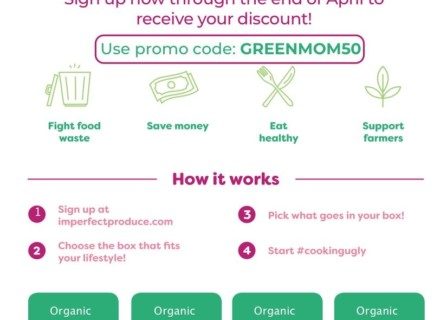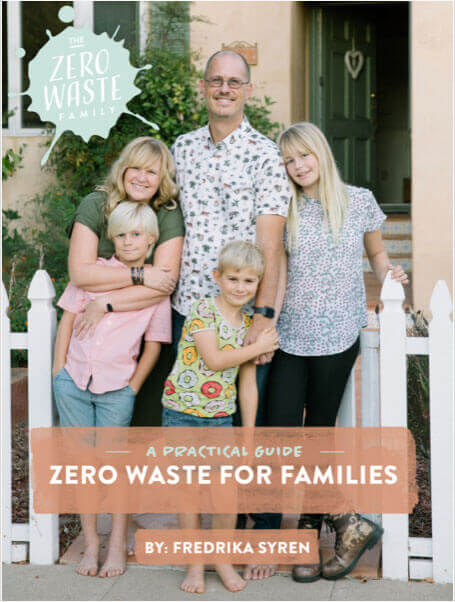By Kacey Mya:
More people are considering their daily impact on the environment. One of the simplest switches you can make is to go green with your food. While wise first steps are recycling more and taking canvas bags to the grocery.However, going green with food means understanding what it takes to get your food from the farm to the table, and making more adjustments toward self-sufficiency while supporting local growers and eco-friendly brands.
Here are six ways you can take your green efforts to the next level while being more aware of how your impact can truly help the environment.
1. Grow Your Own Food
When you grow your own food, you oversee the whole process. You know the source of your food. Go to a seed exchange and come away with unique varieties, or check with a neighbor. Save seeds from your new plants.
Start small with a window mint garden, but you’ll need at least six hours of sunlight. Mints love the sun. Then, expand to an outdoor container garden or plot. Be careful of plants like squash — they spread.
2. Compost Your Leftovers
Going green means paying attention to more than what goes on your plate. Compost your leftovers to reduce the amount you contribute to the landfill. Your waste won’t smell, and you can invest in a small composting waste bin if you live in an apartment. If you really want to go eco-wild, try out a composting toilet.
3. Buy Organic in Bulk
Buying organic in bulk can save you more money, maintain a healthy diet and save the environment by using less packaging. For special dishes, many people buy nuts such as macadamia, pecans and pignolis online in order to save a trip to the grocery store and find a cheaper option. You can buy organic in bulk online or offline and take home nuts, flour, dry beans, dry pasta, grains, trail mix and more.
4. Eat Locally and Seasonally
Many types of food travel, on average, 1,500 to 2,500 miles from the farmto end up on your table. That’s a 25 percent increase from 20 years ago. A typical plate including some grain, meat, vegetables and fruit using local ingredients uses 17 times less petroleum.
When eating seasonally, you do the environment a solid while supporting the local economy and growers. Your diet and meal planning also get a healthy boost when focusing seasonally on local foods.
You get fresher food and more affordable prices, depending on the area and grower, due to less marketing, packaging and shipping. Get bonus points for local companies who work with area farmers to deliver produce to your home — that’s a largely reduced carbon footprint.
5. Avoid Packaging as Much as Possible
How much packaging do you take home from the grocery store? How much actual food is in there?
Stay away from petroleum-based plastics. Avoid packaging as much as possible. Target unpackaged foods as much as possible and ask your grocery store how they would handle your bringing in your own containers. Some brands use bio-based plastics in their packaging. Reuse, recycle and upcycle whatever packaging you do pick up.
6. Ease Up on the Meat
Meat takes major resources to produce, and eating more vegetables improves your diet and the environment. Consider the amount of land, grain, water, hormones and antibiotics necessary to produce the final product. Beef uses thousands of gallons of water compared to tens of gallons for a pound of potatoes.
Start with cutting out one or two servings of meat a week. You can make more than vegetarian lasagna and bean burgers, too — consider vegetarian sushi or Indian dishes.
Bread, produce, meat and milk all have impacts on the environment. Think of how you forget something at the store and rush back out to get it. Consider the gas and packaging you waste, not to mention what it took to get the food to the store in the first place — all in the name of convenience.
From growing your own food to easing up on the meat, use these six tips to deepen your green efforts while improving your health and the environment. Shouldering the “burden” of self-sufficiency doesn’t have to take up too much time, especially given the positivity it hands back to the planet.
Kacey Bradley is the lifestyle and travel blogger for The Drifter Collective, an eclectic lifestyle blog that expresses various forms of style through the influence of culture and the world around us. Kacey graduated with a degree in Communications while working for a lifestyle magazine. She has been able to fully embrace herself with the knowledge of nature, the power of exploring other locations and cultures, all while portraying her love for the world around her through her visually pleasing, culturally embracing and inspiring posts. Along with writing for her blog, she has written for sites like U.S. News, SUCCESS, Tripping.com and more!
Follow Kacey on Twitterand subscribe to her blogto keep up with her travels and inspiring posts!










